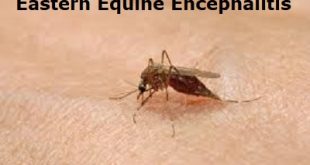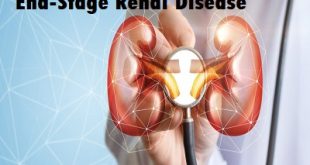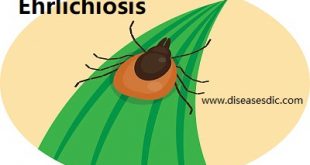What is Ewing Sarcoma?
Ewing sarcoma is cancer that occurs primarily in the bone or soft tissue. While Ewing sarcoma can develop in any bone, it is most often found in the hip bones, ribs, or long bones (e.g., femur (thighbone), tibia (shinbone) or humerus (upper arm bone)). It can involve the muscle and the soft tissues around the tumor as well.
Ewing sarcoma cells can also metastasize (spread) to other areas of the body, including the bone marrow, lungs, kidneys, heart, adrenal glands and other soft tissues. Under the microscope, Ewing sarcoma cells appear small, round and blue. Ewing sarcoma gets its name from Dr. James Ewing, the doctor who first described the tumor in the 1920s.
Types of Ewing Sarcoma
There are three types of Ewing’s sarcoma. These types depend on whether the cancer has spread from the bone or soft tissue where it started.
- Localized Ewing’s sarcoma. The cancer has not spread to other areas of the body.
- Metastatic Ewing’s sarcoma. The cancer has spread to the lungs or other places in the body.
- Recurrent Ewing’s sarcoma. The cancer does not respond to treatment or returns after a successful course of treatment. It most often recurs in the lungs.
Causes
It’s unclear what causes Ewing’s sarcoma, as it doesn’t appear to run in families. So far, research suggests that it’s not related to exposure to radiation, chemicals, or other outside things in the environment.
It appears that the cell DNA changes after birth, leading to Ewing’s sarcoma. Why that happens remains unknown.
One possibility is that it could be a second cancer in people who’ve been treated with radiation for another type of cancer.
Risk Factors
A risk factor is anything that increases a person’s chance of developing cancer. Although risk factors often influence the development of cancer, most do not directly cause cancer. Some people with several risk factors never develop cancer, while others with no known risk factors do.
Doctors and researchers do not know what causes most cancers in children and young adults. But the following factors may raise a person’s chance of developing Ewing sarcoma:
- Genetic changes. Changes in a tumor cell’s chromosomes appear to be responsible for Ewing sarcoma, but the disease is not inherited. This means that it isn’t passed down from a parent to a child. The genetic changes occur for no known reason. A high percentage of Ewing sarcoma cells have a chromosomal translocation, which means that small pieces of genetic material have swapped places inside the tumor cell. The translocation is usually between chromosomes 11 and 22, although it may also occur between chromosomes 21 and 22, 7 and 22, and 17 and 22. The fusion of these bits of genetic material results in the out-of-control growth of Ewing sarcoma cells.
- Age. Ewing sarcoma can occur at any age. But more than half (50%) of people with Ewing sarcoma are between the ages of 10 and 20, with a median age of 15.
- Gender. Ewing sarcoma is more common among boys than girls.
- Race/ethnicity. Ewing sarcoma occurs most frequently in white people and is rare in Black people in the United States and Africa. Ewing sarcoma has been reported in Japan and is uncommon in China.
Symptoms
When you have Ewing’s, you may feel pain, swelling, or stiffness in the area of the tumor (arms, legs, chest, back, or pelvis) for weeks or months. This could get mistaken for bumps and bruises. In children, you might mistake it for sports injuries.
Other symptoms include:
- A lump near skin that feels warm and soft to the touch
- Constant low fever
- Limping because your legs hurt
- Bone pain that gets worse when you exercise or during the night
- Broken bones without an obvious cause
- Weight loss
- Always being tired
- Paralysis or loss of bladder control if the tumor is near your spine
When you see symptoms, you should contact your doctor so they can do a diagnosis. As with many types of cancer, the earlier you have it detected and treated, the better.
Complications
Possible complications of Ewing sarcoma include:
- pleural effusion, which is the buildup of fluid in the lung tissue layers
- problems breathing
- weakness or paralysis of muscles
If Ewing sarcoma has spread to other areas of the body, it can be life threatening. For this reason, it is vital for a doctor to evaluate any symptoms as quickly as possible.
Diagnosis of Ewing Sarcoma
In addition to a complete medical history and physical examination, diagnostic tests help confirm the presence of a tumor and also provide details about the tumor that can help oncologists determine the best approach to treatment. Diagnostic tests for Ewing sarcoma may include the following:
Multiple imaging tests:
- X-ray. This diagnostic test uses invisible electromagnetic energy beams to produce images of internal tissues, bones and organs on film.
- Radionuclide bone scan. To begin, a small amount of radioactive dye is injected into the patient’s body and absorbed by the bone tissue. Pictures of the bone are captured with a special camera and are used to detect tumors and bone abnormalities.
- Magnetic resonance imaging (MRI). This diagnostic procedure uses a combination of large magnets, radio frequencies and a computer to produce detailed images of organs and structures within the body. This test is often done to see if the tumor has spread to the nearby soft tissues.
- Computed tomography (CT or CAT) scan. This diagnostic imaging procedure uses a combination of X-rays and computer technology to produce horizontal, or axial, images (often called slices) of the body. A CT scan shows detailed images of any part of the body, including the bones, muscles, fat and organs. While CT scans are more detailed than general X-rays, they are usually less detailed than MRI scans.
- Positron emission tomography (PET) scan. For this test, radioactive-tagged glucose (sugar) is injected into the bloodstream. Tissues that use the glucose more than normal tissues (such as tumors) can be detected by a scanning machine. PET scans can be used to find small tumors or to check if treatment for a known tumor is working.
Blood tests, including blood chemistries
Biopsy of the tumor. During this procedure, tissue samples are removed (with a needle or during surgery) from the body and examined under a microscope to determine if cancer or other abnormal cells are present.
Bone marrow aspiration/biopsy. This procedure involves removing a small amount of bone marrow fluid and tissue, usually from part of the hip bone, to see if cancer has spread to the bone marrow.
Ewing sarcoma is difficult to distinguish from other similar tumors. Diagnosis is often made by excluding all other common solid tumors and using genetic studies.
Treatments for Ewing sarcoma
Treatment for Ewing sarcoma often involves a combination of:
- Radiotherapy – where radiation is used to kill cancer cells
- Chemotherapy – where medicine is used to kill cancer cells
- Surgery to remove the cancer
As Ewing sarcoma is rare and the treatment complicated, you should be treated by a specialist team. They’ll recommend a treatment plan based on where the cancer is and its size.
Talk to your care team about why they’ve suggested the treatment plan, and ask them to go over the benefits and any risks involved. You may also want to discuss what care you might need afterwards.
Radiotherapy
Radiotherapy is often used to treat Ewing sarcoma before and after surgery, or it may be used instead of surgery if the cancer cannot be removed safely.
Chemotherapy
Most people with Ewing sarcoma have chemotherapy to shrink the cancer and then surgery to remove as much of it as possible. This is often followed by further chemotherapy to kill any leftover cancer cells.
Surgery
If Ewing sarcoma affects your bones, you’ll need surgery at a specialist bone cancer centre.
There are 3 main types of surgery for Ewing sarcoma. Surgery can be used to remove:
- the affected bone or tissue – this is called a resection
- the bit of bone containing cancer and replacing it with a piece of metal or bone taken from another part of the body – this is called limb-sparing surgery
- all or part of an arm or leg – this is called an amputation
If you have an arm or leg amputated, you may need a prosthetic limb and support to help you regain the use of the affected limb.
Can Ewing Sarcoma Be Prevented?
The risk of many adult cancers can be reduced with certain lifestyle changes (such as staying at a healthy weight or quitting smoking), but at this time there are no known ways to prevent most cancers in children and teens.
The only known risk factors for Ewing tumors (age, gender, and race/ethnicity) can’t be changed. There are no known lifestyle-related or environmental causes of Ewing tumors, so at this time there is no known way to protect against these cancers.
 Diseases Treatments Dictionary This is complete solution to read all diseases treatments Which covers Prevention, Causes, Symptoms, Medical Terms, Drugs, Prescription, Natural Remedies with cures and Treatments. Most of the common diseases were listed in names, split with categories.
Diseases Treatments Dictionary This is complete solution to read all diseases treatments Which covers Prevention, Causes, Symptoms, Medical Terms, Drugs, Prescription, Natural Remedies with cures and Treatments. Most of the common diseases were listed in names, split with categories.







